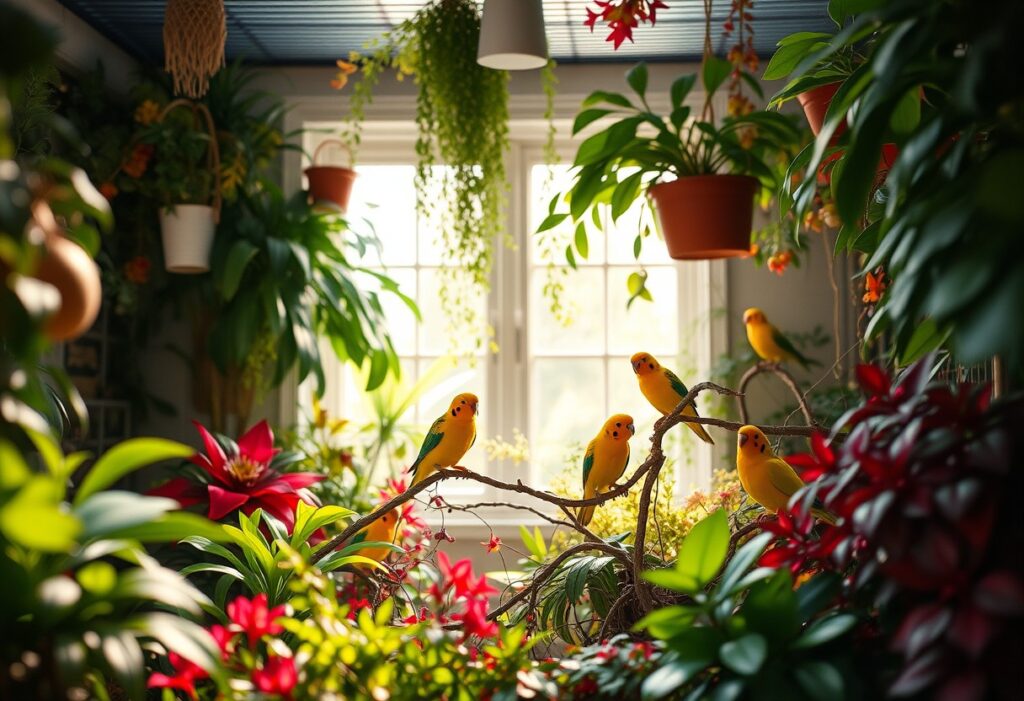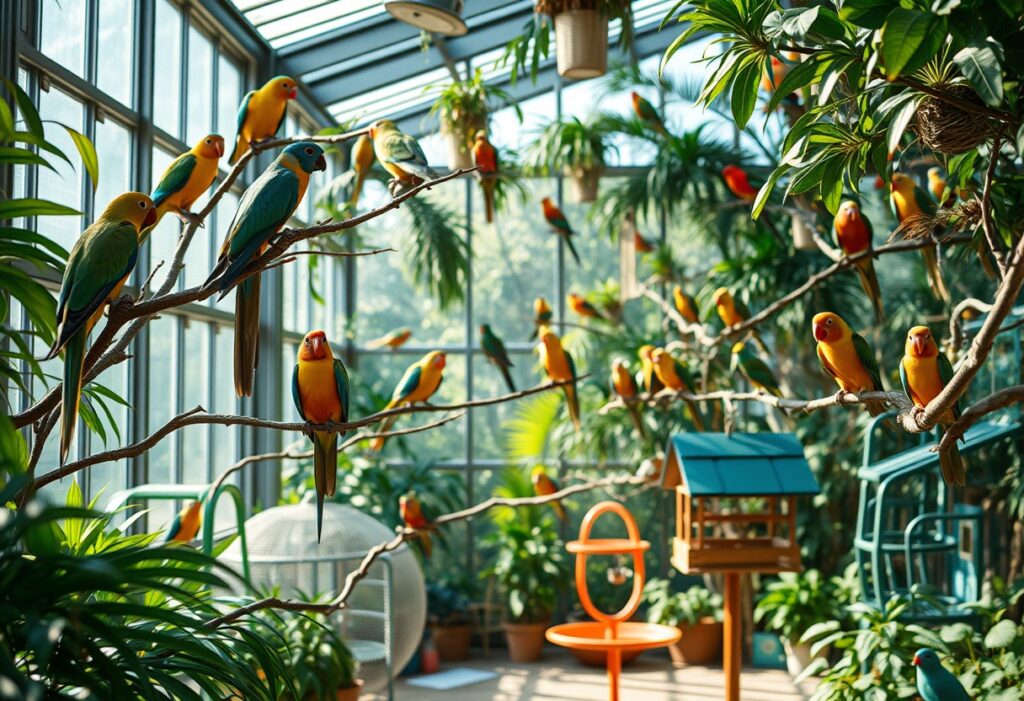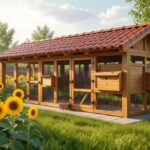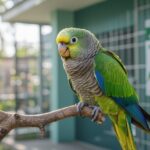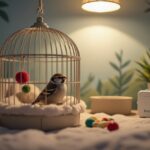This guide will help you transform your backyard into a vibrant bird sanctuary that attracts a variety of feathered friends. By understanding the imperative elements such as providing food, water, shelter, and nesting sites, you can create a perfect habitat for birds. Learn how to choose the right plants, set up feeders, and maintain your sanctuary to provide a safe and welcoming environment. Not only will you enjoy the beauty and sounds of nature, but you’ll also play a vital role in supporting local wildlife and promoting biodiversity.

Understanding the Basics of Bird Sanctuaries
For those looking to create an inviting and safe space for our feathered friends, understanding the basics of bird sanctuaries is imperative. A bird sanctuary is not just about putting up feeders and birdhouses; it encompasses creating a habitat that supports the diverse wildlife in your area. From providing food and water to ensuring shelter and nesting sites, a sanctuary should be a holistic environment that nurtures the well-being of birds.
Importance of Bird Sanctuaries
If you’re wondering why bird sanctuaries matter, the answer is multifold. First and foremost, they serve as crucial habitats for many bird species, providing them with the necessary resources to thrive in increasingly urbanized environments. Additionally, by establishing a sanctuary in your backyard, you contribute to conservation efforts and help combat the alarming decline in bird populations due to habitat loss and environmental changes.
Moreover, creating a bird sanctuary can have profound effects on the local ecosystem. By attracting a variety of species, you facilitate natural pest control, pollination, and even seed dispersal. This not only enriches the biodiversity of your neighborhood but also renders your garden a more vibrant and lively place.
Types of Birds Commonly Found
Bird sanctuaries can attract a wide array of species, depending on your geographical location and the specific features of your sanctuary. Birds such as sparrows, finches, mockingbirds, and hummingbirds are commonly seen in most backyards. Understanding what types of birds are native to your area will help you tailor your sanctuary to meet their needs.
| Type of Bird | Characteristics |
| Sparrows | Small, social birds that often congregate in flocks. |
| Finches | Known for their colorful plumage and melodious songs. |
| Mockingbirds | Renowned for their ability to mimic the songs of other birds. |
| Hummingbirds | Unique for their rapid wing flapping and ability to hover. |
| Robins | Recognizable by their red-breasted plumage and melodious calls. |
- Common birds include sparrows, finches, mockingbirds, and hummingbirds.
Any bird sanctuary can be enhanced by knowing the specific needs and habits of these birds, allowing you to attract them effectively.
Plus, understanding the types of birds commonly found in your region can make your sanctuary even more successful. You may encounter migratory birds as well, which can add diversity to your sanctuary. It’s beneficial to observe seasonal patterns and make adjustments to your setups accordingly.
| Aspect | Consideration |
| Feeding | Different species prefer different seeds or nectar. |
| Nesting Locations | Providing nesting materials will attract more birds. |
| Water Sources | Birds need fresh water for drinking and bathing. |
| Plants | Native plants support local bird populations and food sources. |
| Seasonality | Different species are visible during different seasons. |
- Consider plants that are native to your area for better attraction of specific birds.
Any local knowledge about the right plants and seasonal maintenance will enhance your sanctuary’s effectiveness in attracting a rich variety of birdlife.
Planning Your Bird Sanctuary
Any successful bird sanctuary starts with careful planning, and understanding your backyard space is a crucial first step. By creating an environment that attracts a variety of bird species, you can foster a sanctuary that thrives. It is crucial to evaluate your yard’s dimensions, existing features, and overall layout before making any changes. This assessment will enable you to identify the best locations for bird feeders, baths, and shelters while ensuring that these installations do not interfere with your outdoor activities.
Assessing Your Backyard Space
For this pivotal task, take a stroll around your yard with a notepad in hand. Observe elements like tree cover, sun exposure, and wind patterns. Trees offer great shelter and nesting spots, while open areas can host feeders and baths. Note any natural water sources you might already have, as birds are naturally drawn to water. This initial assessment helps you gauge which birds are likely to visit your sanctuary and what features you need to enhance or introduce.
Additionally, consider the potential disturbances that your backyard may face, such as nearby roads or large pets. Understanding these factors will guide you in creating a space that is both inviting and safe for your feathered friends. Keep in mind the types of landscaping you already have, as well as spaces that might need some modification to achieve your sanctuary goals.
Choosing the Right Location
The location of your bird sanctuary plays a significant role in attracting and retaining birds. It is important to dedicate a sunny spot for feeders and bluebird houses, as these birds enjoy warmth and light. Meanwhile, other features such as birdbaths should be placed in a shaded area to discourage overheating, particularly during the summer months.
Plus, remember to position your feeders and baths away from potential threats, such as windows or busy streets, which could lead to fatal encounters. Aim for a location that is visible from your home, yet safe enough to allow birds to feel secure. Consider surrounding your chosen area with native plants, which can provide natural cover, attract insect life, and encourage a diverse range of birds to visit your sanctuary. By carefully planning the location, you will create an inviting and secure oasis that benefits both you and the bird species that frequent your backyard.

Essential Features of a Bird Sanctuary
Once again, creating a bird sanctuary in your backyard is a fulfilling endeavor that benefits both you and the avian visitors that grace your space. To foster a thriving bird environment, there are several necessary features you can incorporate into your sanctuary, including food sources, water sources, and shelter. By thoughtfully planning these elements, you can create a safe haven for birds to feed, drink, and nest, contributing to their well-being and enhancing your personal enjoyment of nature.
Providing Food Sources
You need to ensure that your sanctuary has a variety of food sources to attract a diverse range of bird species. Start by installing bird feeders filled with a mix of seeds, suet, and nectar to cater to different bird preferences. Popular feeder types include tube feeders for small seeds, platform feeders for larger seeds, and hummingbird feeders for those beautiful pollinators. Additionally, consider planting native plants that produce fruits and seeds, which can provide a natural and dependable food source for birds throughout the year.
You will also want to be mindful of the types of food you offer, as some foods can be harmful to birds. For instance, avoid using commercial seed mixes that contain fillers such as corn, which many birds do not eat. Instead, focus on high-quality seeds like sunflower seeds, millet, and safflower, which are known to attract a variety of species. By providing consistent and safe food sources, you are not only helping birds thrive but also creating a vibrant and lively atmosphere in your backyard sanctuary.
Creating Water Sources
Sources of water are crucial for birds, especially during the hotter months when natural water supplies may become scarce. Installing a birdbath or a small pond can provide birds with an accessible place to drink and bathe. It’s important to change the water regularly to maintain cleanliness and prevent the spread of diseases among birds. A shallow birdbath with textured surfaces enables birds to perch comfortably while they enjoy a refreshing drink or a quick splash.
For instance, consider adding a circulating water feature to your birdbath, which not only keeps the water fresh but also produces gentle splashes that can attract birds. You might also want to incorporate a small fountain, as the movement of the water will catch the attention of various bird species seeking hydration. Providing these water sources not only supports birds’ health but also enhances the overall appeal of your sanctuary.
Designing Shelter and Nesting Areas
Even the structure of your backyard plays a significant role in creating a successful bird sanctuary. To make your area more inviting, provide various shelters and nesting options for birds. Planting native bushes and trees can create natural perches and cover for birds to hide from predators. Additionally, you can hang birdhouses or install nesting boxes at appropriate heights to entice birds to settle and breed in your sanctuary. Be sure to choose the right dimensions and entry hole sizes for different bird species to maximize occupancy.
Sources suggest that focusing on native flora not only attracts local birds but also supports their nesting habits. Indeed, native plants often provide the perfect habitat, increasing biodiversity and ensuring that your sanctuary becomes a thriving ecosystem. By Designing specific, safe spaces for shelter and nesting, you contribute to the longevity of bird populations and enrich your environment with their presence.

Tips for Maintaining Your Sanctuary
Unlike a traditional garden, maintaining a bird sanctuary involves a unique set of practices that ensures the long-term success of your space. It’s imperative to adopt effective maintenance routines to support the diverse bird species that will visit your backyard. Here are some tips to keep your sanctuary thriving:
- Regularly check and refill bird feeders.
- Maintain a clean water source, replacing water frequently.
- Trim back any overgrown plants to ensure safe landing areas.
- Observe bird activity to identify any changing needs.
- Remove any invasive plant species that may harm native birds.
Regular Maintenance Routines
Clearly, regular maintenance is vital in creating a successful bird sanctuary. You should establish a consistent schedule for cleaning feeders and baths, as this helps prevent the spread of disease among the bird population. Additionally, be proactive with the upkeep of any landscape features or structures, ensuring that they remain conducive to attracting a wide variety of species.
Another critical aspect of regular maintenance is monitoring the condition of plants and vegetation within your sanctuary. Native plants are imperative for food and shelter, so it’s important to keep them healthy. Watering, pruning, and fertilizing will help maintain these plants, ensuring a vibrant habitat for the birds.
Monitoring Bird Activity
Tips for tracking bird activity can greatly enhance your enjoyment and understanding of your sanctuary. You should take the time to observe your birds’ behaviors and interactions. Not only will this help you become familiar with the various species visiting your sanctuary, but it will also inform your maintenance practices, as you can make adjustments based on what you observe.
Bird watching is a rewarding activity that can also serve a functional purpose in your sanctuary. Pay attention to when different species visit and how they utilize the resources you provide, such as feeders and nesting sites. By understanding their preferences, you can further tailor your sanctuary to meet their needs, ensuring a welcoming environment. You may even consider keeping a journal to document the birds you encounter—this way, you can track trends over time and adapt your practices to promote a healthier habitat.
Recognizing the importance of consistent maintenance and observation will significantly impact the viability and enjoyment of your bird sanctuary. By actively engaging with the birds in your space, you’ll foster a deeper connection to nature and provide a habitat that supports their well-being.
Final Words
Following this guide, you will be well-equipped to create a thriving bird sanctuary in your backyard. Begin by assessing your space and planning carefully for elements that cater to the diverse needs of local bird species, such as appropriate feeding stations, water sources, and native vegetation. By planting native plants and creating shelter, you will provide a valuable habitat that not only benefits birds but also enriches your own outdoor experience. Remember that patience is key; it may take time for birds to discover and frequent your sanctuary.
As you begin on this rewarding journey, remain attentive to the changes in your sanctuary over time. Document the species that visit and observe their behaviors, which will deepen your understanding and appreciation of your feathered friends. Engaging with local conservation efforts can amplify your impact, connecting you with a community of like-minded individuals who are passionate about avian preservation. Your backyard sanctuary can serve as an important haven for birds, contributing positively to local ecosystems while bringing joy and beauty into your life.
Q: What are the first steps to creating a bird sanctuary in my backyard?
A: The first steps to creating a bird sanctuary include researching the types of birds native to your area and their habitat requirements. Start by assessing your backyard space and identifying existing plants or trees that could provide natural shelter and food. Next, plan to add bird feeders, birdbaths, and nesting boxes that cater to local bird species. Consider planting native flowers, shrubs, and trees to attract a variety of birds and ensure there’s a consistent food source throughout the year.
Q: How can I provide food and water sources for birds in my sanctuary?
A: To provide food for birds, use a combination of feeders stocked with seeds, suet, nectar, and fruits, depending on the bird species you want to attract. Ensure the feeders are cleaned regularly to prevent disease. It’s also beneficial to have native plants that produce seeds, berries, and nectar, as they provide natural food sources. For water, install a birdbath, which can be shallow enough for smaller birds and include features like rocks and pebbles for perching. Regularly change the water to keep it fresh and clean to encourage birds to visit.
Q: What precautions should I take to protect birds in my backyard sanctuary?
A: To protect birds in your backyard sanctuary, it’s important to minimize threats from predators, such as cats and hawks. Consider using bird feeders that are designed to deter larger birds and create cover with dense shrubs where smaller birds can seek shelter. Avoid using pesticides and herbicides, as they can harm birds and reduce the availability of insects which serve as food. Additionally, ensure windows are bird-safe by using decals or films that make them more visible to birds, reducing the risk of collisions.

